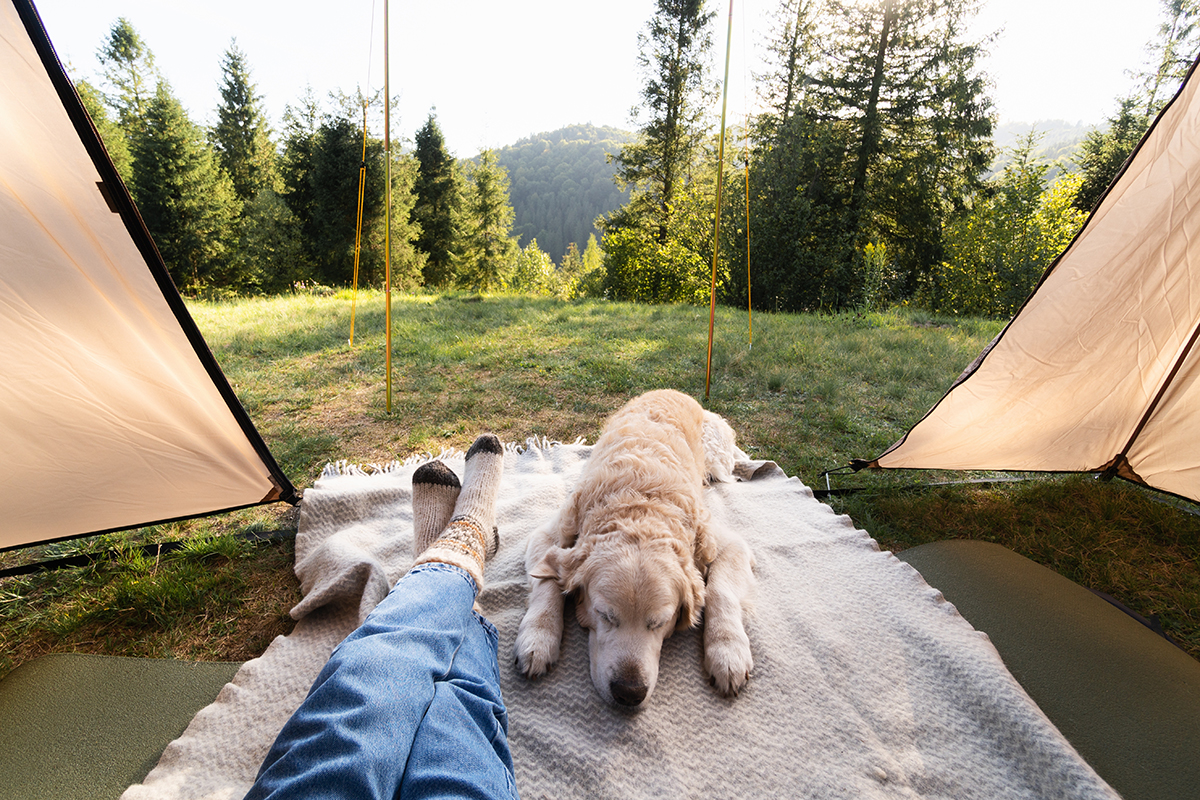
Cultures from around the world can inform and inspire us about how to live our best lives. From Spain’s “siesta” to Japan’s “shinrin-yoku” to Denmark’s “hygge,” these approaches have caught on around the world.
The latest to keep an eye on is “friluftsliv” (pronounced free-loofts-liv), which means “open-air life” and can be considered hygge’s outdoorsy cousin, according to Linda Åkeson McGurk, author of The Open-Air Life: Discover the Nordic Art of Friluftsliv and Embrace Nature Every Day.
While hygge focuses on creating a sense of warmth within ourselves and spending quality time with loved ones, friluftsliv is about everything we do outside before heading inside to cozy up in front of the fireplace, McGurk differentiates. “It’s about spending time outside in the natural and the cultural landscape for personal wellness and without any pressure to compete or achieve. And it’s essentially connecting with your nearby nature in everyday life.”
While friluftsliv encompasses many different activities—what we normally think of as outdoor recreation like hiking, camping, kayaking and survival skills—it’s not simply about spending time outside. “It’s a philosophical lifestyle that… revolves around having a deeper relationship with nature,” McGurk explains. It is essentially slow living. In many ways, it is about being mindful in nature to soak it all in and reap the numerous benefits it provides, such as reducing stress and anxiety, boosting mood and improving physical health.
Friluftsliv in everyday life
The term friluftsliv was coined by Norwegian playwright and poet Henrik Ibsen in the mid-1800s during a period of rapid industrialization, modernization and urbanization. “It’s telling that it came about at that time because that’s when these big transitions took place in society,” McGurk notes. “We moved from the agrarian society to an industrialized society. People felt like they lost touch with nature.”
This philosophy can be viewed as an antidote to the structured, competitive, tech-obsessed society we are experiencing now. “I feel like we’re at that crossroads today as well but with digitalization. … I think friluftsliv has an important role to play, not just in the Nordic countries, but also outside of the Nordics.”
Friluftsliv is embraced by the general population in many Nordic countries and embedded in the culture. “It’s a tradition that we pass on from one generation to the next, so it’s common to engage in friluftsliv with your family across generations, and you learn by observing others.”
It is part of the public school system, where all the adults in a child’s life support the notion that it’s important to be outside every day, regardless of the weather. It’s also common for companies to incorporate the practice. “[Companies] have walk-and-talk meetings… where you would go out in smaller groups and have a little discussion while walking around the block.” Other team-building activities can include campouts or an annual ski trip to the mountains.
Embrace the 10 principles of friluftsliv
Friluftsliv can easily become part of your self-care routine, which is how McGurk views it for herself. “I don’t know how I would function without a daily walk, honestly. That’s how I wind down from work and I get my creativity and focus back. And it just feels great.” She encourages people around the world to embrace friluftsliv and make it part of their daily rhythm.
Here are 10 core principles of friluftsliv and how you can easily implement them into your life according to McGurk:
1. Be one with nature
If we don’t connect with, protect and respect nature, we won’t be able to enjoy it and benefit from it. Mindfulness helps us make this connection, whether it be through outdoor yoga, forest bathing or simply finding a sit spot outside to soak in the peace and beauty of nature. “To me, just the whole act of being in nature and being under no pressure to achieve or compete, that alone creates a space for me to feel mindfulness.”
2. Don’t mind the weather (or the season)
This is the premise of McGurk’s first book, There’s No Such Thing as Bad Weather: A Scandinavian Mom’s Secrets for Raising Healthy, Resilient, and Confident Kids, in which she explains how to prepare for and enjoy the outdoors in various weather situations. A little bit of rain or a chill in the air should not hold you back.
3. Use your body
Physically challenging ourselves outdoors to maintain good health, develop resilience and achieve a harmonious state of mind is an important part of friluftsliv. This can include going for a run, using our arms to row oars or carrying wood for a fire. “I think it’s important to use your body even if it means that you encounter resistance. Sometimes I think we grow from that resistance. … It makes us more resilient and better connected with the natural world.”
4. Appreciate your nearby nature
You don’t have to venture deep into the wilderness to experience a nature connection. Start by looking for nature around your home, such as sitting on a balcony, exploring your backyard or biking to a local park. “The most common form of friluftsliv is to just walk around your neighborhood or nearby parks. … So it’s something that people do on a very regular basis.”
5. Learn useful skills
Open-air life gives you an opportunity to grow confidence through greater self-reliance by learning skills like starting a fire, foraging, purifying water and setting up shelter. “An important part of friluftsliv is to learn the basics of survival. …Those skills can really come in handy in any type of crisis.”
6. Keep it simple
Simplicity and frugality are key to living an open-air life. McGurk defines a hierarchy of friluftsliv activities to keep in mind. Start with day-to-day friluftsliv, such as hanging out in the backyard or on a balcony. On weekends, you can go a little farther, such as to a state park. Finally, there’s vacation friluftsliv, which might entail hiking or camping in the wilderness.
7. Do not compete
McGurk warns against competition in outdoor activities, as it can defeat the purpose of friluftsliv and erase the many benefits of nature. “We’re just steeped in this culture that tells us to strive for more money, more success, more power. … I think friluftsliv is really an antidote to all the stressors that modern life has created. And open-air life is about giving yourself permission to just be.”
8. Disconnect to connect
The philosophy encourages much-needed breaks from screens throughout the day to recharge and get back to a balanced state. As McGurk writes in her book, “By putting away the electronic devices and activating all our senses outside, we take the edge off the prevailing stress-inducing culture and allow ourselves to tune into nature, ourselves and our loved ones.”
9. Propel yourself
Friluftsliv encourages us to use our natural energy to get around outdoors, such as by walking, biking, paddling, skating, pedaling or swimming. “Friluftsliv really starts when the engine is turned off, and a lot of that has to do with your perception of nature and being able to sort of go deeper into that nature connection. A lot of times when we are in a vehicle, that sort of creates a barrier toward nature.”
10. Nurture your sense of wonder
Finally, living an open-air life means cherishing the joy in everyday nature experiences to find a sense of awe and contentment and ultimately feel happier and calmer. While some people practice friluftsliv for skill building, others do it more for a spiritual experience. “A lot of people here actually feel like they are connected to something greater than themselves when in nature, and I think that’s pretty universal. But I think what makes the Nordic countries stand out in that regard is that we use nature as a way to handle crises. … A lot of people seek comfort in nature.”
Photo credit: Prystai/Shutterstock.com




